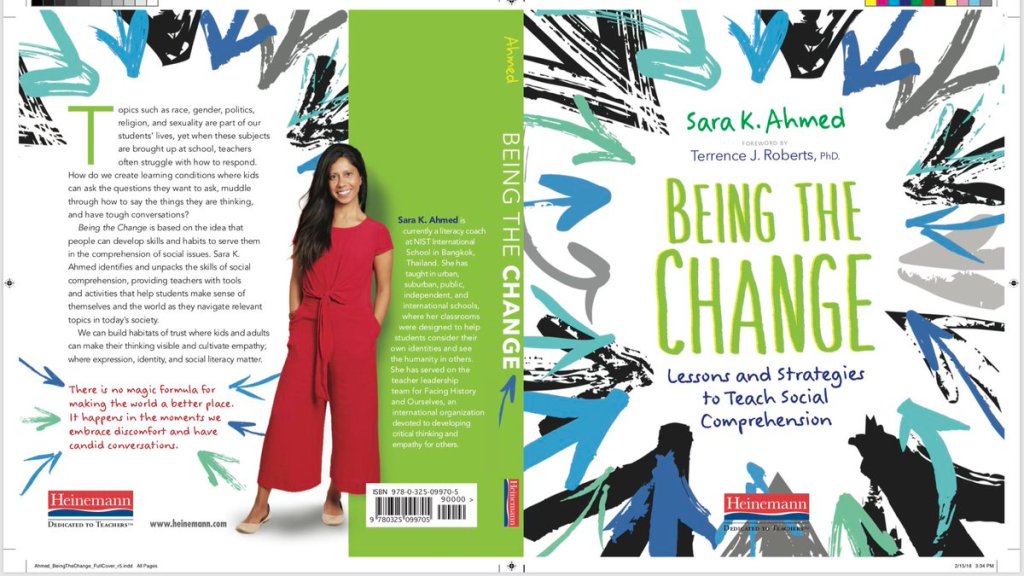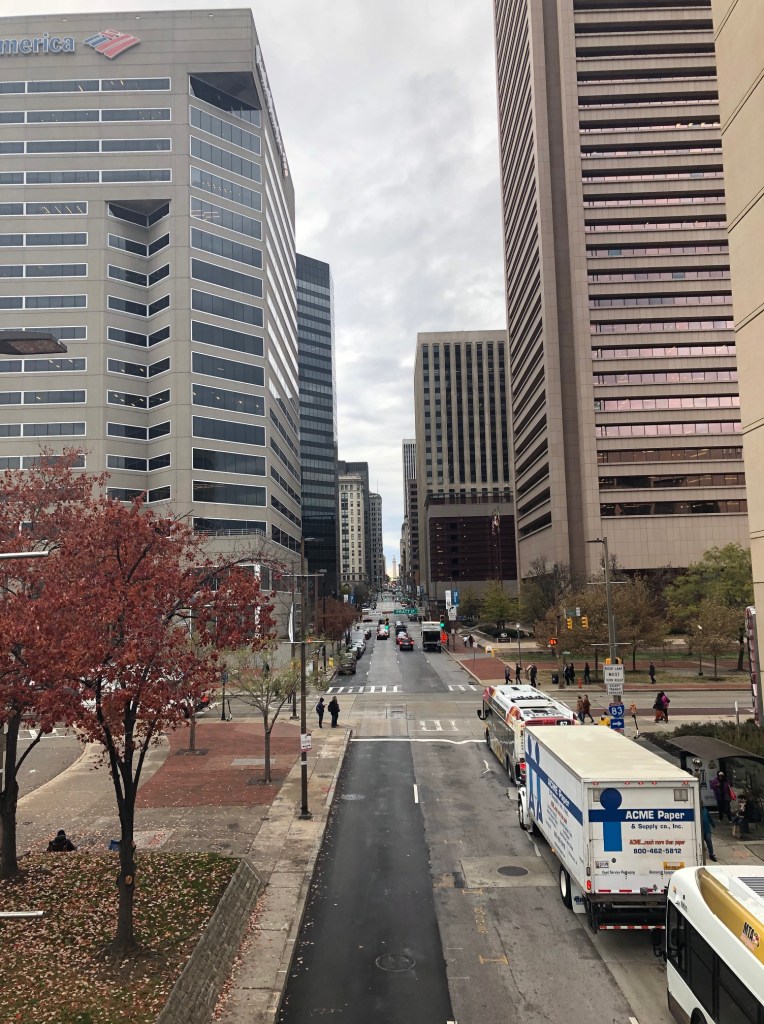NCTE November: A Compilation of Experiences
Things You Learn as a First-Timer at NCTE 2019 by Courtney Knowlton
1. If you coincidentally find yourself in an elevator with Kelly Gallagher, don’t be afraid to tell him that Reading Reasons made you a better teacher.
2. Ideas and books will fly at you in every direction. Make a quick note of things, like ‘Read Woke,’ that you want to look into more later.
3. Stock up on the playful badge ribbons, such as “I’m a page turner” and “Word Nerd.” They will go fast!
4. Standing in line at George Takei’s book signing is more than worth it for the chance to listen to his husband’s quips and to experience George’s appreciation for teachers firsthand.
5. Make use of group texts to plan meals together. It is an ideal time to reflect and to hear stories about that time in New Orleans when a writing marathon included a carousel.
6. Download the NCTE conference app. You’re going to need your own “personal assistant” to keep all those times and room numbers straight. You do not want to miss Ralph Fletcher discussing visual literacies using a zoomed in puffin photo.
7. Listen to your mentor when she tells you to wear comfortable shoes. Don’t let blisters slow you down when you’re trying to get from that poster session regarding video grading to a translanguaging presentation several city blocks away within the convention center.
8. Also, listen to her when she tells you to bring an extra suitcase for all the books you will receive for free/purchase. No one wants to be the person sitting on the ground surrounded by her toppled stack of titles because she didn’t come prepared.
9. Make time for decompressing and processing, maybe in the hotel hot tub.
10. Attend the NWP Brunch. It helps you remember that you are truly part of a writing movement.
A first experience perspective of NCTE by Sharon Williams
In the weeks leading up to attending NCTE for the first time, I considered each session carefully as I perused through the offerings posted in the online schedule for each day. I honestly thought that I would be attending professional development workshops that would offer me ideas on how to enhance my teaching practices in my classroom. And, while this was one of the ultimate aftereffects of attending, NCTE was so much more. For me, the conference not only offered me the benefit of useful tools that can readily be implemented into my classroom, but it also afforded me the opportunity to collaborate with peers, meet with mentors known personally and from afar, and to reflect upon inclusiveness and social justice in my own practices.
One session, in particular, that stands out to me is YA Literature and Teaching Poverty. The presenters were dynamic and passionate about the subject of childhood poverty and hunger and the impact that it has upon the learning environment. They created and shared a unit with attendees that included book speed dating, a poverty simulation, and argument essays. Students chose novels addressing the topic of poverty and its impact on not only individuals but also society as a whole. The chosen novels were read in literature circles. Students were required to write an analysis of their novels with a focus on various themes such as the relationship between poverty and power.
In addition, the teachers utilized the PBS Series, Poor Kids to drive home the effects of poverty and hunger in the lives of children prior to participating in the simulation and reflection activity. Finally, students were asked to choose a social justice issue related to poverty, craft a claim, and develop an argumentative essay upon that claim.
At the end of the presentation, the presenters shared student writings crafted during the implementation of this unit. As an attendee, I found it to be very moving. In the samples share, students were thoughtful and reflective in their arguments.
Even though the unit presented in this session is for 10th-grade, it is my intention to collaborate with my 8th-grade LA department team to include portions of the unit in our hero’s journey unit in January.
Standout Speakers by Janice Ewing
Three standout speakers for me were Tommy Orange at NCTE, and Dr. Dana Stachowiak and Dr. Kim Parker at CEL. They were all passionate and memorable. I’ll be sharing more about their presentations in my blog post on December 4th.

What if… by Kelly Virgin
At the very end of a long and packed four-day conference, I attended the NWP brunch and was invited to spend some time reflecting through a What if poem:
What if...
I'd said I'm too busy
this year?
I don't want to spend the money
the professional days
the time
the energy
to travel to NCTE.
I wouldn't have gathered
around tables
and talked with educators from
as far as the West Indies
and near as "a few blocks down the road."
I wouldn't have shaken the hand
of a mentor idol and thanked him for his inspiration.
I wouldn't have rekindled old friendships
and sparked new ones.
I wouldn't have written
poetry
and inquiry questions
and personal narratives
and new plans for Monday.
I wouldn't have opened my eyes
and my heart
and my mind
to a wealth of innovative and imperative ideas.
What if
I'd stayed home instead?
I hope to see you all at NCTE in Denver next fall!











